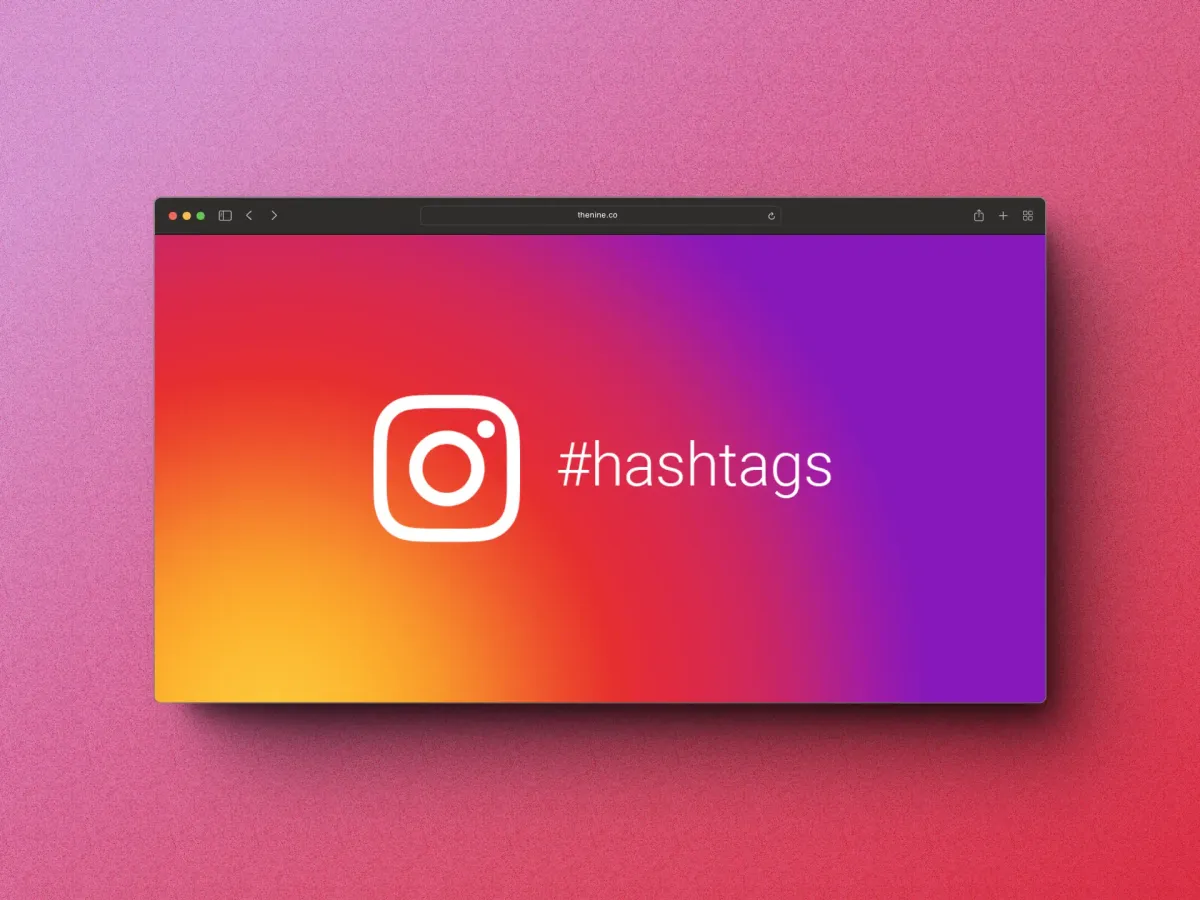The Truth About Instagram Hashtags in 2023

Not long ago, hashtags were considered an essential part of Instagram marketing. Creators meticulously crafted hashtag strategies to increase reach and engagement. But in recent years, the common wisdom has been that hashtags are ineffective on Instagram. Is this outdated advice misleading creators?
In this post, I'll share new research on how hashtags actually work in 2023. You'll learn proven techniques to leverage hashtags that align with Instagram's latest algorithm updates.
Do Instagram Hashtags Still Matter?
Recently, Instagram CEO Adam Mosseri made an interesting statement about hashtags. When asked if hashtags would come to Stories, he responded:
“Not for a while. We’re actually not even working on it. Hashtags can be great. They also can be a really difficult spam vector to deal with. So not at all clear to me that they are worth the trouble at this moment.”
This echoes advice from many top creators – that hashtags are essentially dead for growth. With Instagram's algorithmic feed, some assume hashtags are now useless. But new evidence suggests this common narrative is misleading.
While hashtag strategies from 5+ years ago are now ineffective, the right hashtags still play an important role. They provide key signals that Instagram's AI uses for ranking content.
But how exactly should you incorporate hashtags in 2023? Let's break down what's changed and how you can optimize your approach.
Debunking Outdated Hashtag Myths
First, let's explore some outdated myths that many creators still follow:
Myth 1: Use Small Hashtags to Rank High
A common tactic is using a "hashtag ladder". You include a mix of high and low competition tags. The idea is to first rank for small hashtags, then gradually "climb" up to larger ones.
But this doesn't align with how modern feeds work. When I audit top posts for both high and low volume hashtags, I see a mix of larger and smaller accounts ranking. Instagram serves the most relevant content rather than favoring mega-influencers.
Myth 2: Only Use 15-30 Hashtags
Arbitrary hashtag limits don't make sense today. Different types of content warrant different hashtag amounts. A single relevant hashtag can be more beneficial than 30 irrelevant ones.
Myth 3: Hashtags Expand Your Reach
In the past, hashtags served as a discovery tool. People browsed them to find new accounts and content. But hashtag pages today are more curated, with most exposure coming from the main feed.
Rather than directly expanding reach, effective hashtag use improves your content's relevance. This in turn boosts impressions and engagement.
How Hashtags Help in 2023
While some assumptions are outdated, hashtags aren't completely useless. Here are two key ways they provide value:
1. Categorize Content
Hashtags help categorize and describe your content. This gives Instagram's algorithm useful signals for understanding the topic and audience.
Mosseri's comments hint at this renewed focus:
“I'm much more focused on the web, on search, which I think can meet a lot of the needs of hashtags.”
Consider how people use Instagram like a search engine:
Instead of browsing #photographytips, they search “photography tips”.
Hashtags now serve to optimize for these search queries and related interests.
2. Improve Personalization
Your hashtags also help Instagram personalize content and recommendations.
For example, if you frequently use #weddingphotography, Instagram may serve you more related posts about weddings when you search “photography tips”.
Even if you don't rank highly for top hashtags, optimizing for user interests and search can improve reach.
Choosing the Right Hashtags in 2023
Now that we've explored how hashtags actually work, how do you select the right ones? Here are three key tips:
1. Match Post Topic, Context, and Audience
Consider the “CCA” framework:
- Content - Choose hashtags relevant to your caption and visuals.
- Context - Use hashtags that align with your niche and brand identity.
- Audience - Target hashtags your ideal audience uses.
Matching all three elements will maximize relevance.
2. Research Related Search Terms
Explore search on Instagram and TikTok to find which queries match your content.
For example, a post about photography tips could target searches for:
- Photoshoot ideas
- Improving photography skills
- Types of cameras
Choose hashtags that overlap with these searches.
3. Use Hashtags Strategically
While some hashtags clearly categorize your content, others subtly make connections that AI can pick up on. You don't need to exclusively use ultra-targeted tags.
Additionally, while 3-5 quality hashtags often outperform 30 irrelevant ones, don't limit yourself to an arbitrary number. Let your content and goals guide which and how many hashtags to include.
Putting It All Together
Rather than viewing hashtags as direct marketing tools, think of them as "metadata" that assists Instagram's algorithms. Combined with thoughtful captions and other optimizations, hashtags boost content relevance, personalization, and search visibility.
Here is an example hashtag strategy for a post:

Caption: Check out these 5 tips I learned for taking incredible portraits with natural lighting. Let me know which tip is your favorite in the comments!
Hashtags:
#portraiture #portraitphotography #naturalportraitlighting #portraitinspiration #photographytips #photoideas
This uses a mix of broader and more targeted hashtags closely related to the content and topic. The hashtags provide useful metadata for Instagram to understand the subject matter, context, and target audience.
While hashtag practices have evolved, they are still an important optimization when used strategically. Your goal is to provide as many relevant signals as possible, rather than chasing vanity metrics and arbitrary limits.
With the right approach, hashtags can significantly improve your content's positioning in 2023. Let me know in the comments if you have any other hashtag tips and tricks!




